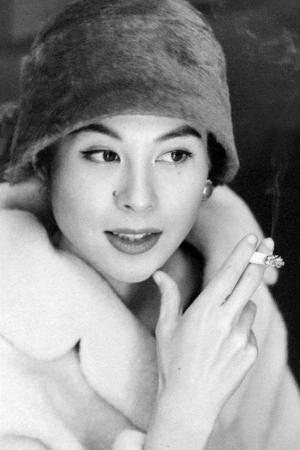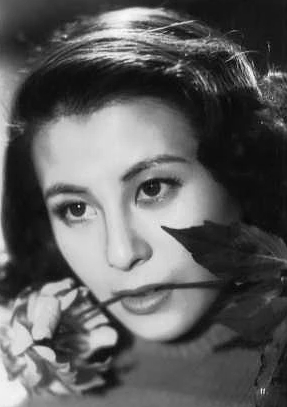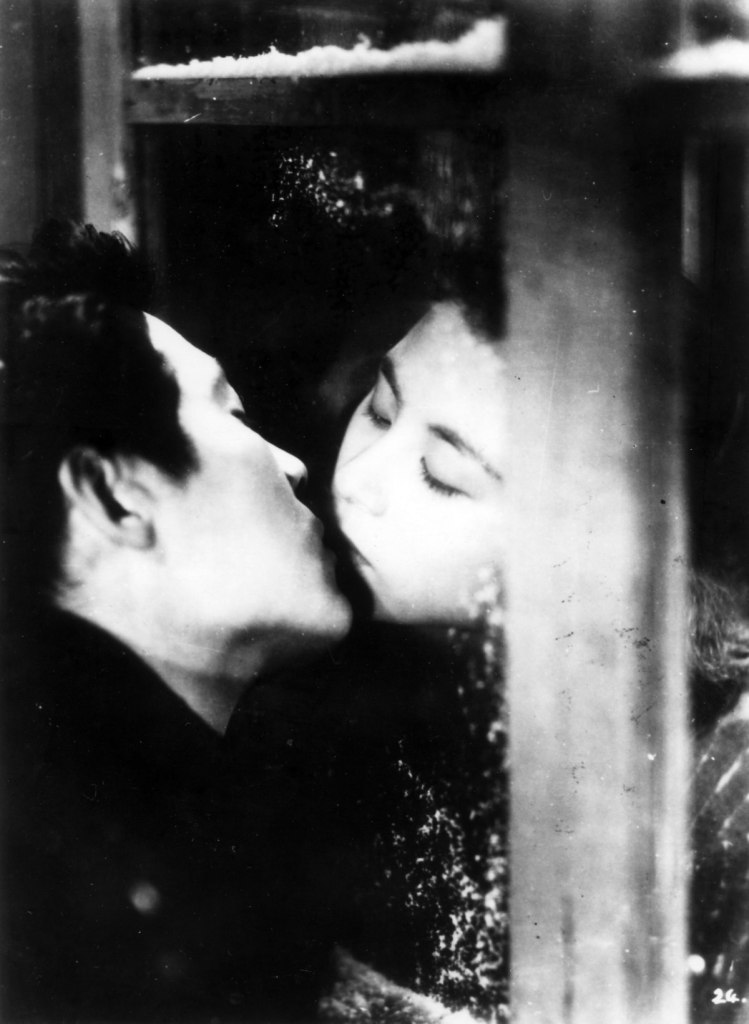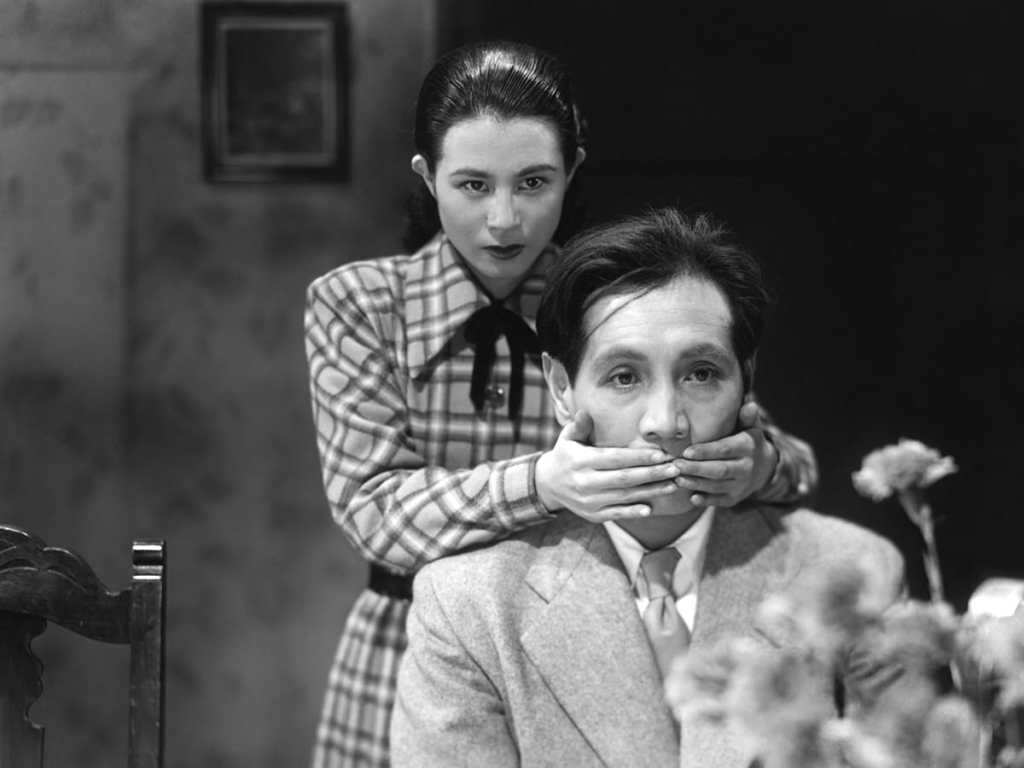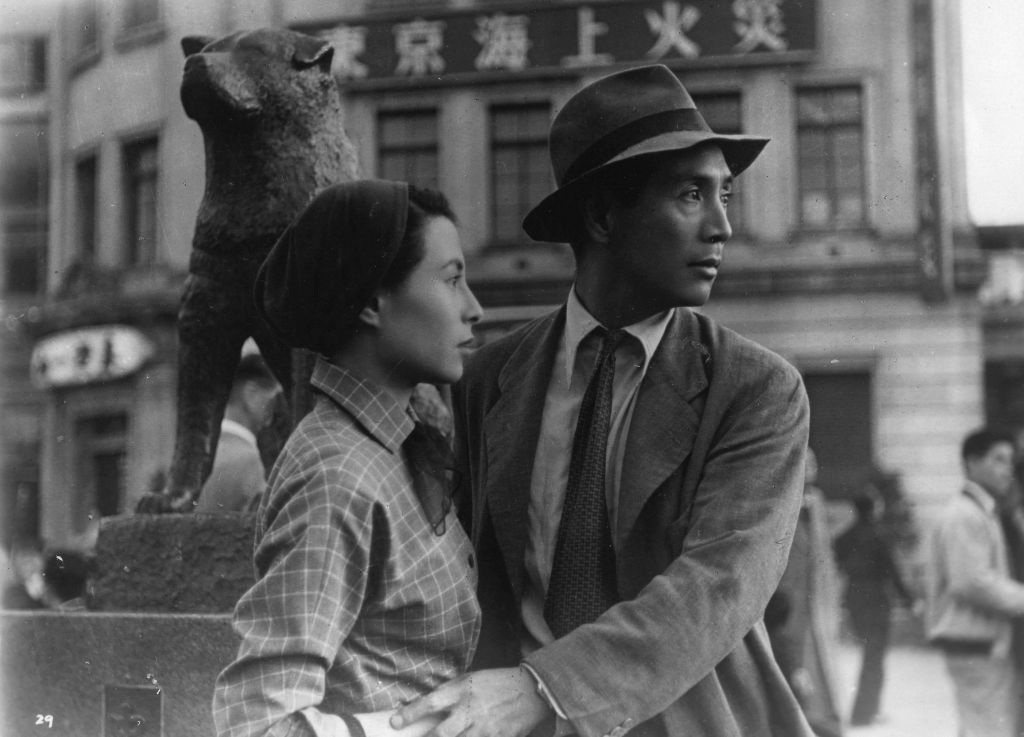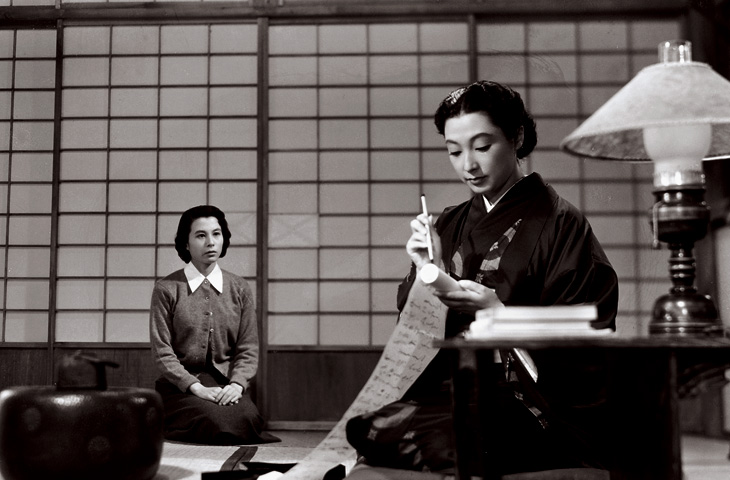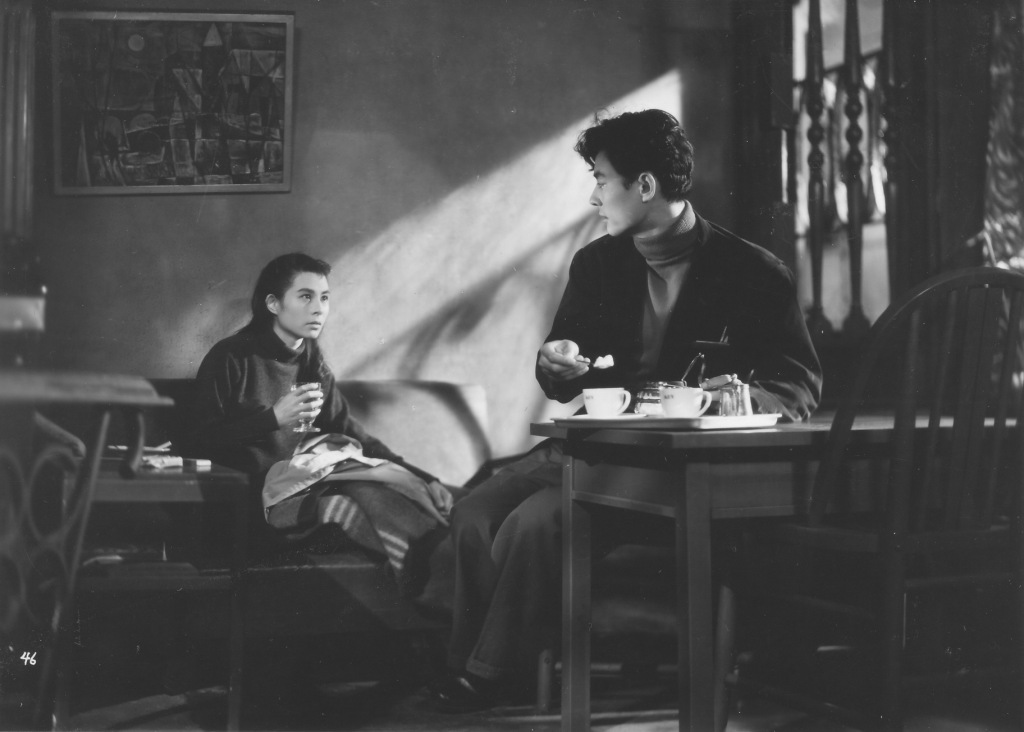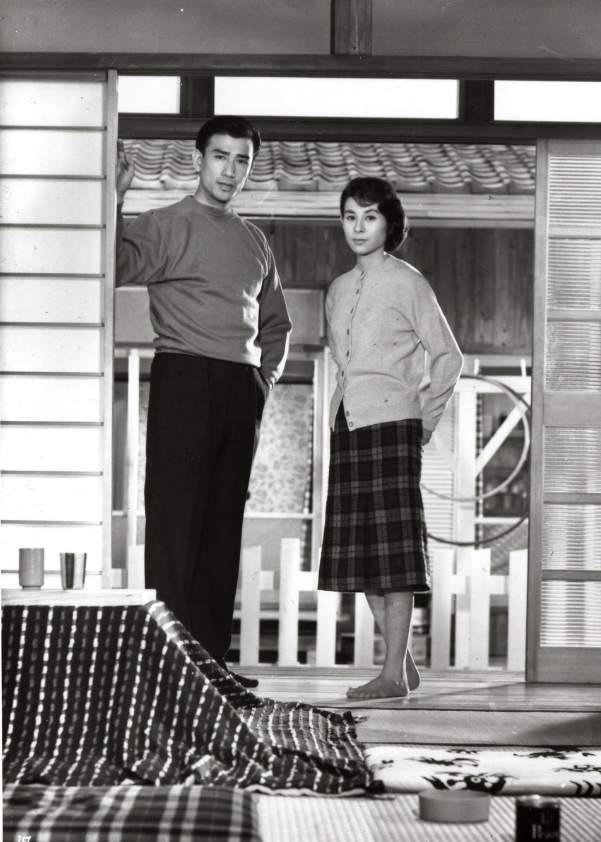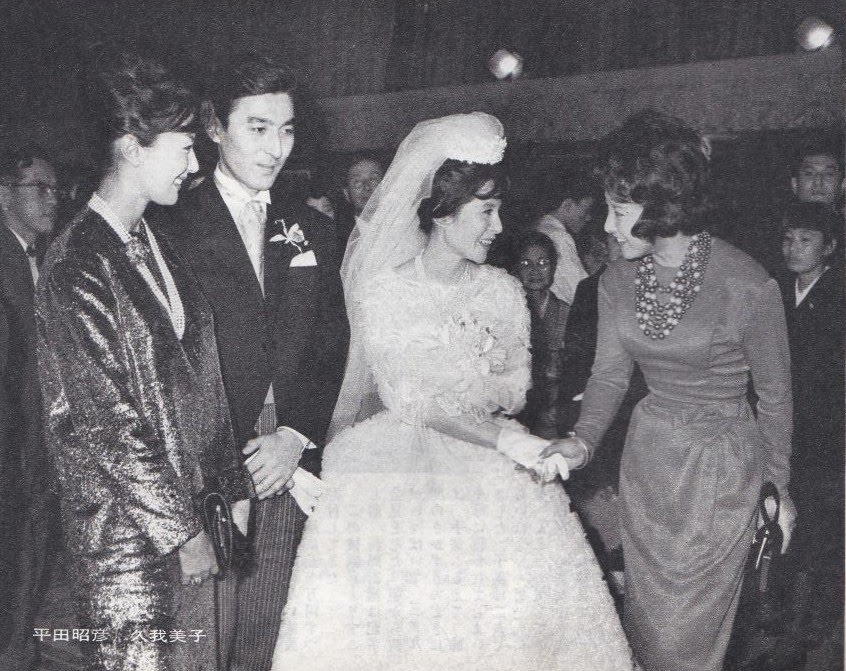When your resume includes working for such directors as Kurosawa, Naruse, Mizoguchi, Tanaka, Kinoshita, and Ozu, you’re bound to even be recognizable to western film fans. If the golden age of Japanese cinema needed a youthful leading lady, Yoshiko Kuga was likely to be selected. On top of her recognition, she was also an award-winning actress as well as someone who was involved in a number of behind-the-scenes activities.
Noticeably younger than many of her on-screen contemporaries, Yoshiko Kuga was born in 1931 in Tokyo, Japan. Her father was a marquis and member of the House of Peers during the era of Japan’s Empire. Kuga became an actress while still a teenager and attending Gakushuin Junior High School. She was one of the 48 new actors and actresses out of 4,000 applicants in Toho’s search for new faces in 1946. Her film debut was in the anthology movie Four Love Stories (1947) where she appeared in the first episode with Ryô Ikebe. Her next film roles were playing a high school student in Mikio Naruse’s Spring Awakens (1947) and another teenager in Akira Kurosawa’s Drunken Angel (1948).
During 1948, she was one of several actors and actresses involved in the noted 1948 union strike at Toho studios. The 1948 strike was in opposition to Toho’s dismissal of 1,200 employees in an attempt to save on expenses and kick out Communists during Japan’s Red Purge. When the 1950s rolled around, Kuga worked independently.
In 1950, Kuga starred in one of her most notable films, Till We Meet Again, opposite Eiji Okada and directed by Tadashi Imai. The movie won “Best Film” from the Kinema Junpo Awards, the Mainichi Film Concours, and the Blue Ribbon Awards, the latter had it also win “Best Director.” A notable scene has the two stars kiss while their lips are being blocked by glass, over a decade before Alain Delon and Monica Vitti would famously do the same in L’Eclisse (1962).
Kuga’s next films of note were Naruse’s The Angry Street (1950) and Kenji Mizoguchi’s Portrait of Madame Yuki (1950). One of her most famous roles came with Kurosawa’s The Idiot (1951) as the film’s analogue to the novel’s Agláya Ivánovna opposite Masayuki Mori’s exported characterization of Prince Myshkin. While the film was considered a misfire from the great director at the time of its release (and severely cut in its intended runtime), it has gained more and more recognition and appreciation over the years. Whether or not you are one of the film’s defenders, I think it is safe to say Kuga’s last line of “What a fool I’ve been. I was the idiot.” sticks with the viewer long after seeing it.
Kuga then played the younger sister of the title characters in Older Brother, Younger Sister (1953) again for director Naruse as well as a role in one of the segments in Imai’s anthology film An Inlet of Muddy Water (1953). She then played the lead in Kinuyo Tanaka’s directorial debut, Love Letter (1953), as a woman with a past who reunites with a man she knew in her innocence (the man played by Masayuki Mori). The film was both a rewarding debut for Tanaka as well as a good showcase for its two stars.
For the next year, she was awarded “Best Supporting Actress” by the Mainichi Film Concours for her roles Keisuke Kinoshita’s The Garden of Women (1954), Kon Ichikawa’s A Billionaire (1954), and Masaki Kobayashi’s Somewhere Under the Broad Sky (1954). The same year she also acted in Mizoguchi’s The Woman in the Rumor (1954).
Kuga then reteamed with her director and leading man from Somewhere Under the Broad Sky (Kobayashi and Keiji Sada) for Beautiful Days (1955) and starred in Mizoguchi’s adaptation of the epic poem The Tale of the Heike, Taira Clan Saga (1955). She also got to play the main character’s older sister in Kinoshita’s melancholy Farewell to Dream (1956) (which earned her the Blue Robbin for Best Supporting Actress) and one of the leads in both Golden Globe winners Rose on His Arm (1956) also from Kinoshita and Yellow Crow (1957) from Heinosuke Gosho.
Kuga’s next role was as a princess alongside a fellow Toho new star contestant winner, Toshirô Mifune in Yagyû bugeichô (1957) as well as its sequel a year later (Yagyû bugeichô: Sôryû hiken). Gosho’s Elegy of the North (1957) offered her another leading role as a young disabled woman who has an affair with an older married man (Mori yet again) but also starts becoming friendly (and maybe even equally fond of depending on the viewer’s interpretation) his wife (Mieko Takamine).
Kuga then made her first film for Ozu with Equinox Flower (1958) as Chishû Ryû’s independent-minded daughter. After roles in two Kinoshita films, The Eternal Rainbow (1958) and The Snow Flurry (1959), Kuga made another classic for Ozu, Good Morning (1959). In Ozu’s delightful comedy, Kuga plays the aunt of the two young hunger striking protagonists who appears to have a mutual attraction to their English tutor (Keiji Sada).
After working for common director Kinoshita as leads in Thus Another Day (1959) and Spring Dreams (1960), she then acted in the French New Wave inspired Cruel Story of Youth (1960) for emerging director Nagisa Ôshima as the main character’s older sister. While the film drew controversy, it also was a commercial success and played an important role in the growing Japanese New Wave.
Roles in the action movie Daredevil in the Castle (1961) and the neo-noir Zero Focus (1961) were among her work in the 1960s. She moved more towards television and theater as the post-classic era moved on until her last film role in 2000. Outside of acting on-screen, Kuga also co-founded a production company with fellow actresses Keiko Kishi and Ineko Arima in 1954, Ninjin Club, which worked on allowing for better working conditions for studio system actors. Kuga also had one of the successful acting marriages as she was married to Akihiko Hirata (known for Godzilla fame) from 1961 until his death in 1984. Kuga herself passed away on June 9, 2014, at the age of 93.
~Virginia
